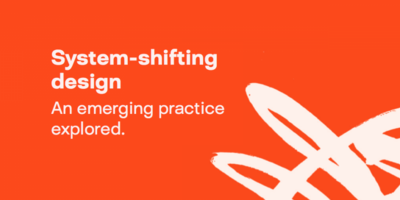Camden Council

Camden Council wanted to expand its highly subscribed registration services. With Design Council’s help, it embarked on a project to scale up its services in checking nationality applications and registering weddings and civil partnerships.
Challenge
Camden Register Office is responsible for the registration of births, deaths, marriages and civil partnerships in the London Borough of Camden. It also provides citizenship and settlement checking and deed poll name changing. A number of these services are highly subscribed.
Camden’s Nationality Checking Service, for example, generates annual revenue worth £300k. A further £400k is generated each year by Weddings & Civil Partnerships, which also has considerable benefits for local businesses.
The council wanted to grow revenue from both these services – to £450k and £550k, respectively – and increase the number of licensed weddings and civil partnerships facilities in the borough from 40 to 90, without compromising its economic impact ratio.
Expanding profitable yet highly subscribed services such as these required a fresh approach to service design. With support from Design Council, Camden Council set out to identify how best to achieve this effectively and cost-efficiently.
What we did
Participants were challenged to question everything – how they did things, why and what they could do differently that would enable them to do things bigger and better.
Nick Devitt, Design Associate
Design Associate Nick Devitt was assigned to work with the Camden Council team. His first step was to bring together a cross-section of council staff - including members of the council’s service delivery team and registrars - to participate in two workshops.
The first session explored the value, principles of and potential for user-led service design, while the second examined two specific service areas in greater depth.
Devitt introduced the Camden team to a range of design techniques, including brainstorming, visualisation and prototyping, to highlight processes that would help the service development team ask the right questions.
“It was an invaluable opportunity for them to visualise the services that were being provided and test new ways that these services might be run,” he said. “Participants were challenged to question everything – how they did things, why and what they could do differently that would enable them to do things bigger and better.”
A decision was taken to work with a design agency to create a short, animated visualisation of the processes involved in the service areas and to design a prototype microsite to demonstrate how each service would sit within Camden Council’s website.
Devitt helped to write a design brief and introduced the council to a number of design agencies with appropriate expertise, before Colt Design was appointed.
“From the outset it was clear that while those involved in delivering each of the services were clear about what they did, they lacked experience in communicating this effectively to anyone else,” John Sweeney, Colt’s Design Director, explained.
“The aim was to produce a microsite prototype for internal discussion to demonstrate internally how the new visualisations would be used,” he added.
By early 2015, the prototype microsite was finished and work on the two animated visualisations was almost complete. The next step is to agree how best to incorporate these assets within Camden Council’s new, user-facing website, which is being rolled out over the year.
Results
We were looking for new and innovative ways to promote the Register Office’s services and I think the work of our DA [Design Associate] and the Design Council helped us realise some of the potential areas that we can take advantage of.
Mike Walsh, Strategy and Development Manager, Camden Council
Although it is too early to gauge whether the work done will help Camden achieve its revenue growth targets, there is already evidence that the experience has contributed to positive cultural change.
The council’s service delivery team have become more open to new ideas. Meanwhile, internal communication between different teams has improved, with a wider understanding of the registration team’s ambitions.
“We were looking for new and innovative ways to promote the Register Office’s services and I think the work of our DA [Design Associate] and the Design Council helped us realise some of the potential areas that we can take advantage of,” said Mike Walsh, Camden Council’s Strategy and Development Manager.
“Design thinking helped the team to understand the service from a customer’s point of view by putting staff in the customer’s shoes. Registration staff have been very creative in thinking about processes and this has continued since the project’s end.”
Subscribe to our newsletter
Want to keep up with the latest from the Design Council?

